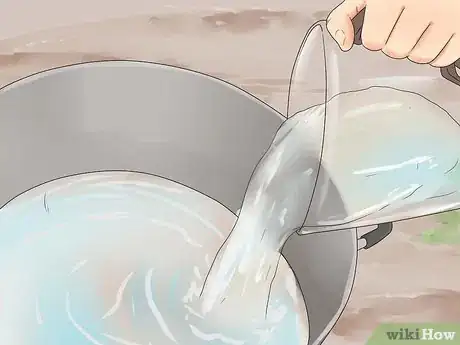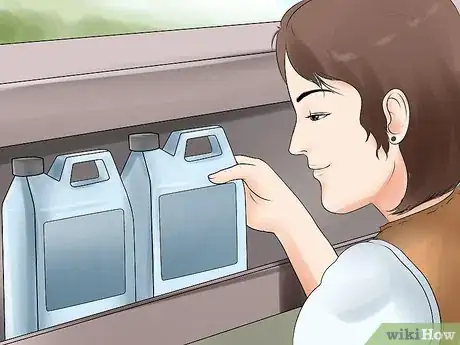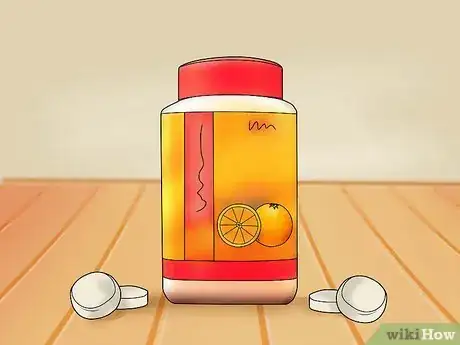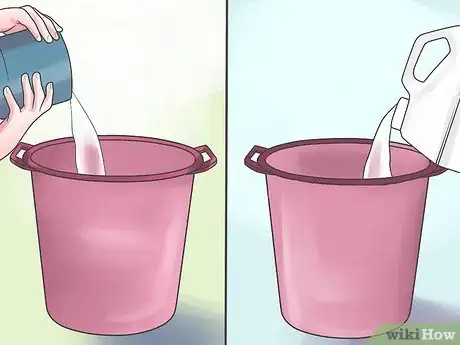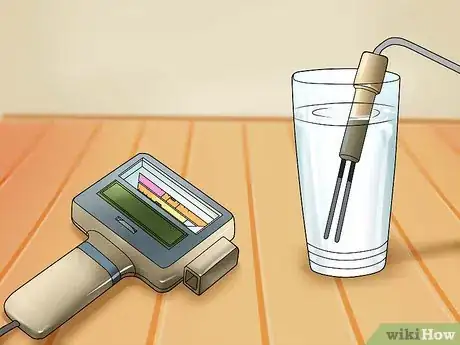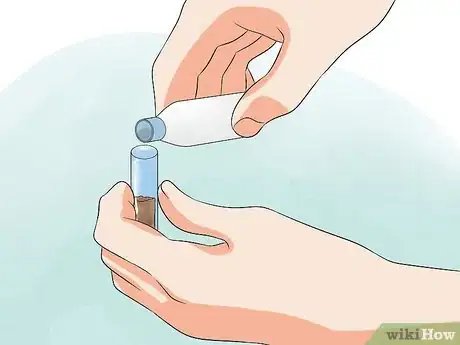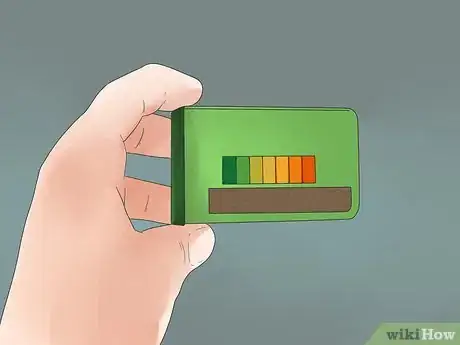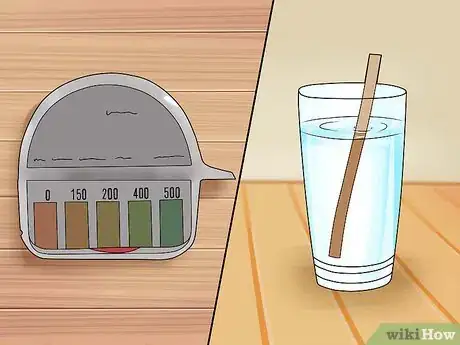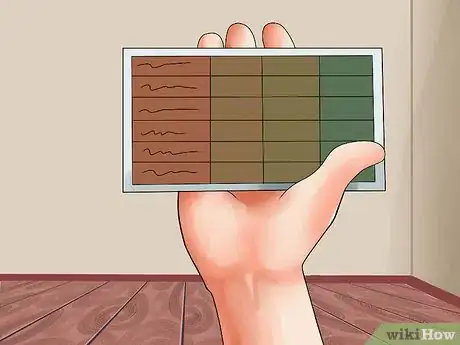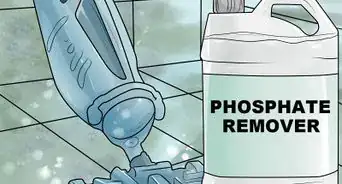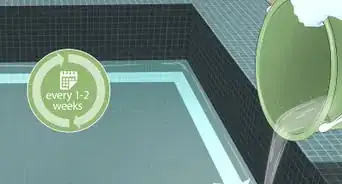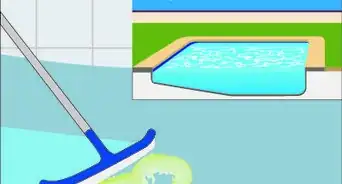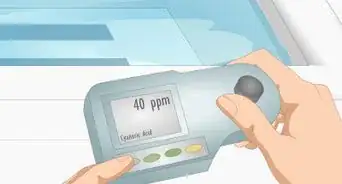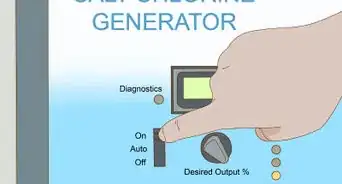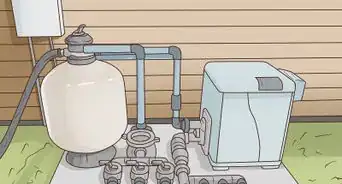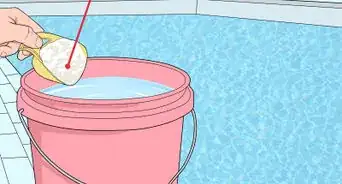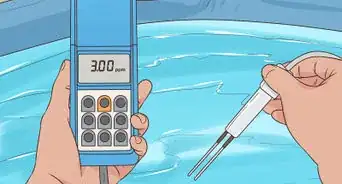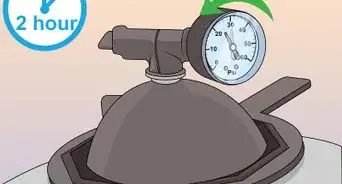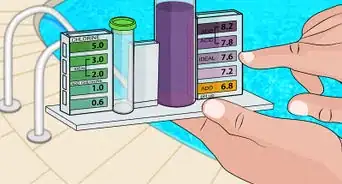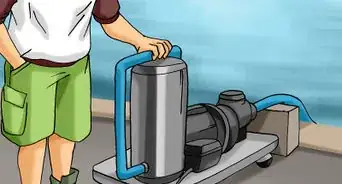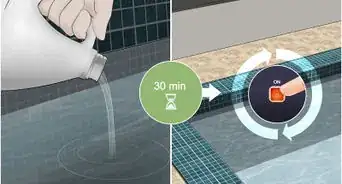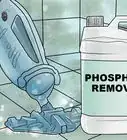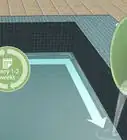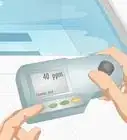This article was co-authored by Oz Tzalalihin. Oz Tzalalihin is a Project Manager for Vitoli Builders, based in Calabasas, California. He has a passion for working with sloped terrains and has shared his expertise through contributions to local publications. Oz holds a PMP (Project Management Professional) degree from Cornell University and specializes in building pools and structures on hillside properties. With his education and experience, he is a valuable asset to Vitoli Builders and is dedicated to delivering quality results and smooth construction.
This article has been viewed 24,903 times.
If you are planning to discharge your pool water, you’ll need to properly dechlorinate the water. You can use the natural sunlight in your backyard to dechlorinate your pool, which is probably the easiest approach but will take a couple of weeks. If you need to get the job done a little faster, you can use a variety of chemical solutions. Some chemical dechlorinators have a negative impact on fish and wildlife, so you may be interested in environmentally responsible products such as vitamin C-based dechlorinators.
Steps
Using Sunlight
-
1Stop adding chlorine to your pool. Simply stop adding the chlorine tablets that you regularly put in your outdoor swimming pool. Exposure to sunlight will gradually dechlorinate the water. You’ll need to leave the pool uncovered for two weeks.
-
2Use a bucket to dechlorinate a small amount of water. If you only need to dechlorinate a bit of pool water to irrigate a tree or a shrub, you can use a bucket. Scoop out a bucket of water and place it in a sunny spot. Leave it in the sun for a week, and the chlorine should be evaporated.[1]Advertisement
-
3Run the pool pump. Although you have stopped adding chlorine, you should continue to run the pump. By circulating the water in your pool, the pump will help ensure thorough dechlorination.
Using Chemicals
-
1Purchase a dechlorination product. To chemically dechlorinate your swimming pool, you can use dechlorination tablets or liquid, such as sodium thiosulphate. The most common chemical for dechlorination is sulfur dioxide, although carbon absorption, sodium metabisulfite, and hydrogen peroxide are also used for this purpose. You should make sure the product you purchase from your swimming pool retailer states that it meets Environmental Protection Agency standards.[2]
-
2Try vitamin C-based dechlorination tablets. You can use ascorbic acid or sodium ascorbate, which are two forms of vitamin C, to dechlorinate water. Vitamin C does not remove oxygen from the water and is not toxic to aquatic life. Whereas sulphur-based products remove oxygen from water and are toxic to fish, vitamin C-based dechlorinators, such as Vita-D-Chlor, are aligned with the EPA’s Clean Water Act. They are safe to handle and easy to dissolve.[3]
- Vitamin C-based dechlorinators are more expensive than sulphur-based products.
-
3Ask a pool professional about carbon absorption filters. If you are looking for the most thorough method of dechlorination, carbon absorption is the way to go. However, it is more expensive than some of the other methods, such as sulphur-based dechlorination tablets. You’ll have to ask a swimming pool specialist about the carbon filters that are available for your pool.[4]
- You could ask the pool professional, “Is there a carbon-based filter that would work well for my pool?”
-
4Pour sodium thiosulfate into the pool. You can use an appropriate amount of sodium thiosulphate to dechlorinate your pool. Pour some warm water in a bucket. Add the required amount of sodium thiosulphate to the bucket. Pour the contents of the bucket into the pool.[5]
- If your pool contains 5000 gallons of water and the total chlorine is currently 50 ppm, you’ll need to add 1.56 pounds (.7 kilograms) of sodium thiosulfate.
- Use an online dechlorination calculator to determine how much sodium thiosulphate to use.
Testing the Water
-
1Test the chlorine levels after two weeks. After two weeks without adding any chlorine to your pool and with the pump running, you should test the chlorine levels. The most accurate way of measuring chlorine concentrations is through a DPD (N-Diethylparaphenylenediamine) test, although test strips or a colorimeter can also be used.
- DPD test kits use a comparator. A comparator allows you to compare your sample to color standards. You put your sample in the slot and then compare the color to the standards on the side of the instrument.
- A colorimeter is an instrument that uses white light to determine chlorine levels. It is a separate instrument, which won’t be included in standard DPD test kits.
- Test strips can also be used to determine chlorine levels. They are the simplest and cheapest option.
-
2Obtain a water sample for testing with a DPD test kit. You’ll need to get a DPD test kit, which should include some test tubes to obtain water samples. Reach into the pool to obtain a water sample from at least elbow depth. Add the recommended drops of DPD reactant to the tubes. Mix the solution in the tube by turning it upside down with the cap on.[6]
-
3Hold the comparator at eye level in proper light. Since the use of the color comparator included in your test kit will involve differentiating between different hues of the same color, such as shades of yellow or pink, you’ll need to perform the test in good lighting conditions. If you are outside, you’ll need to hold the comparator at eye level with the sun a bit to the side, as opposed to shining directly through the comparator. You’ll need to remove your sunglasses, which could interfere with your reading.
- If you are inside, you’ll need to establish lighting that is as close to daylight as possible.
-
4Compare the color in the tube with the comparator in the test kit. On the front of the test kit, you’ll see a color chart that you can use to determine the chlorine level.[7] Find the closest match and note the associated chlorine level in a notebook.
-
5Use a colorimeter to determine chlorine levels. Instead of the comparator included in a DPD test kit, you could use an instrument called a colorimeter. This tool uses a white light beam, which is sent through an optical filter. You just insert your water sample in the top slot. Turn on the colorimeter, which will send a white light beam through the sample. You will get a number on a digital display on the front of the instrument, which indicates the amount of chlorine in the sample.
-
6Use test strips. If you are looking for a simple and cheap way to test chlorine levels, you might want to use test strips. Dip the test strip in your pool. Pull out the test strip and wait for the number of seconds indicated on the test strip kit. You’ll need to hold the test strip horizontally. Then, compare the color on the test strip to the color chart included in the test strip kit. Once you find a match, note the associated chlorine concentration.
- Although not as accurate as a DPD test using a comparator or a colorimeter, test strips will give you a good enough reading in most situations.
-
7Determine whether chlorine levels are close to zero. You’ll want to use one of the testing methods to determine whether the chlorine levels are close to zero or at least at an acceptable level (<0.1 mg/L). If the color in the water sample indicates an acceptable level of chlorine, you have successfully dechlorinated your pool.[8]
- If the chlorine level is not acceptable, you can let it naturally dechlorinate for another couple weeks, or use a chemical method.
- The problem with natural pools is their filtration. There should be a chemical balance with pH.
- When you make a natural pool, you work with a liner and align it with gravel.
- You should add some lilies to filter the water naturally.
Warnings
- Avoid adding chemicals to your pool less than two weeks before you close it.⧼thumbs_response⧽
- In the United States, it is against the law to discharge chlorinated water if the amount of chlorine is above acceptable levels (<0.1 mg/L).⧼thumbs_response⧽
References
- ↑ http://www.sacbee.com/news/state/california/water-and-drought/article2591601.html
- ↑ https://www3.epa.gov/npdes/pubs/dechlorination.pdf
- ↑ https://www.fs.fed.us/t-d/pubs/html/05231301/05231301.html
- ↑ https://www3.epa.gov/npdes/pubs/dechlorination.pdf
- ↑ http://www.csgnetwork.com/poolchemcalc.html
- ↑ http://sarasota.floridahealth.gov/programs-and-services/environmental-health/pools-and-spas/_documents/pools-how-to-use-your-test-kit.pdf
- ↑ http://sarasota.floridahealth.gov/programs-and-services/environmental-health/pools-and-spas/_documents/pools-how-to-use-your-test-kit.pdf
- ↑ https://www.wqpmag.com/right-kind-test-0

